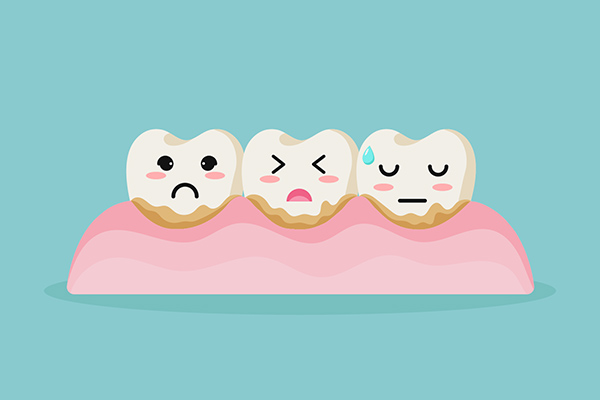 Your general dentist will probably mention plaque and tartar. But do you know the difference between the two? Both plaque and tartar are common dental problems that you may have. There are ways that you can remove plaque at home, but a general dentist must remove tartar in the dental office. Learn the difference between plaque and tartar and how you can prevent both from occurring.
Your general dentist will probably mention plaque and tartar. But do you know the difference between the two? Both plaque and tartar are common dental problems that you may have. There are ways that you can remove plaque at home, but a general dentist must remove tartar in the dental office. Learn the difference between plaque and tartar and how you can prevent both from occurring.
The lowdown on plaque and tartar
Plaque is a colorless film of bacteria that coats the teeth. A person’s diet can contribute to plaque buildup. Although plaque is sticky, it is easy to remove with a good oral hygiene routine. However, if a person does not regularly brush and floss properly, plaque can build up and eventually turn into tartar.
How tartar is different
When plaque builds up and sits on the teeth and gums, it can harden and calcify into tartar. Tartar is difficult to remove at home, and usually, the general dentist must remove it. While plaque is not visible, tartar is usually a yellowish or brown color. It can build up in visible areas on the teeth and also below the gumline. And tartar is not simply a buildup of calcified material. It can irritate the gums or even cause gingivitis because it harbors bacteria.
Prevention is possible
The good news is that people can prevent tartar with a thorough oral care routine at home. By brushing and flossing regularly, people can remove plaque before it has time to contribute to tartar deposits. Often people remember to brush at least twice a day but forget to floss or do not know how. Not flossing allows plaque to remain in between teeth. This, in turn, leads to tartar that people may not realize is there.
If a person worries about tartar building up, other products can help at home. Tartar control toothpaste is a good tool. After brushing and flossing, people can use an antiseptic mouthwash to swish any remaining particles out from the mouth. The mouthwash also washes surfaces of the teeth that the person might have missed with the toothbrush. Finally, one of the tools a person has to control the accumulation of tartar is a balanced, healthy diet.
How to treat tartar
Once tartar deposits are present, it is very hard to remove the deposits at home. The general dentist can remove plaque and tartar buildup during a deep cleaning. The general dentist can also inspect below the gum line for any hidden tartar deposits. The dentist must scrape tartar off the teeth with a tool. If patients need a refresher on how to brush and floss properly, the dentist can give a demonstration.
Discuss plaque and tartar with your general dentist
If you worry that you are not doing a good job preventing plaque and tartar at home, talk to your dentist. The dentist can do an exam and look for any potential issues in the mouth. You can talk to your dentist about your brushing and flossing, as well as what kind of toothpaste would be most helpful. Having a good oral hygiene routine is your defense against plaque and tartar.
Request an appointment or call Paramount Dental Care & Specialty at 562-450-1261 for an appointment in our Long Beach office.
Related Posts
Seeing a general dentist for regular checkups should be part of your dental care routine. This dental professional can help maintain and even improve your teeth and gum health. Asking the right questions can help you know more about proper oral care. Below are some of the questions you can ask your general dentist during…
Cavities are a very common dental issue. Leaving a cavity untreated can lead to serious complications, including tooth loss. Read on to learn about the importance of treating cavities.You should schedule a visit with a dentist anytime the signs of a dental cavity develop to avoid worsening concerns. The following is a detailed review of…
A general dentist knows the importance of a tooth’s appearance. Tooth damage can change the way your tooth looks. Decay, accidents, medications, and conditions can cause tooth damage. Repairing the tooth is vital for your oral and general health. If you want to know how a general dentist can restore your damaged dentition, here are…
